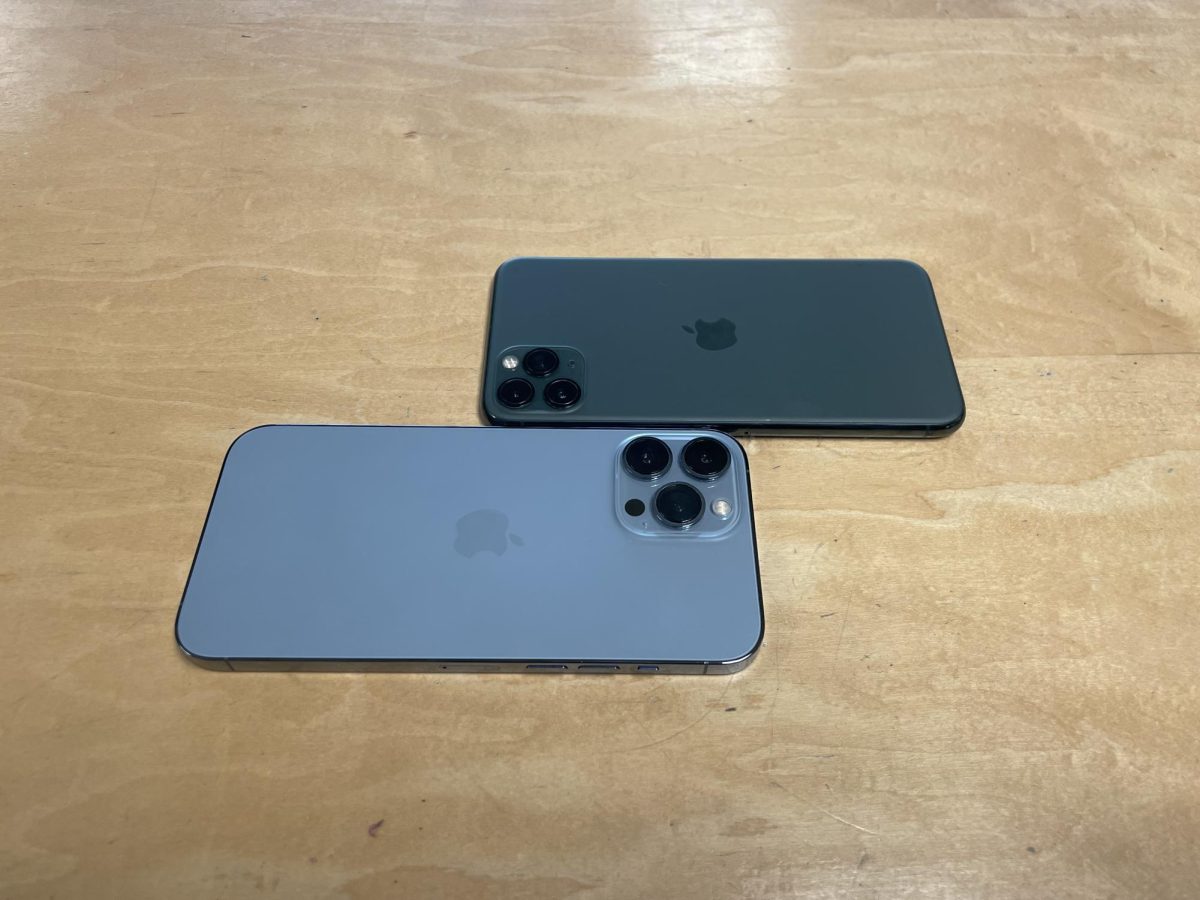Imagine finally purchasing the new iPhone 15 Pro but as you open the box, it looks exactly like your previous phone. You turn it on to see all the new features, but there is nothing that stands out. You realize that you have just paid nearly 1000 dollars for the same exact phone as the iPhone 14 Pro.
Apple has been around for 47 years, starting as a small computer company and eventually evolving into the brand known today. In between these years, Apple has released many innovative products such as the iPhone, which reconstructed how a phone works by adding a keyboard on the screen instead of as a separate operation. However, over the past few years, Apple’s creativity seems to have diminished. From the iPhone 11, all the way to the newly released iPhone 15, each phone appears close to or the same as the previous phone.
Starting with the iPhone 11, it looks like an identical copy of the iPhone XR with the only difference being the 2 cameras on the back of the phone and the different color scheme. In addition to this, the iPhone 13, 14 and 15 all look the same and the functions are the same as before but slightly faster. The reason for this lack of innovation has been speculated to be greed.
Apple advertises their phones by using slogans, highly exaggerating the iPhone. Ironically, the iPhone 14’s slogan is “Big and Bigger” which makes no sense as the size of the phone is the same as the iPhone 13. This marketing scheme that Apple is using, spreads false information about its product, which as a result fabricates the idea that the product is much better than it really is.
Apple also only supports an iPhone for six years after its release. The average person would usually buy one phone and use it until it breaks. However, when using an iPhone, they must buy a new phone after 6 years have passed. This forces the customer to purchase a more recent phone, which in turn, costs more money.
Moreover, in 2016, people began to notice that their phone’s battery was slowing down. Later, people found out that Apple had purposely been slowing down the battery life of the iPhone. This was called the BatteryGate scandal in which Apple was forced to pay 113 million dollars for the case. Even after being caught, Apple still tried to fight back by attempting to make replacement batteries harder to access.

Furthermore, in 2020 Apple removed the adaptor from the iPhone boxes, claiming that it would be better for the environment. This seems like a silly excuse to make the customer purchase a separate adapter from Apple or a company working with Apple.
Contrary to belief, removing the adapters from iPhone boxes does not help the environment. This harms the environment more as it would force people to buy an entirely new box for just one adapter.
Many sources emphasized this, including GlobalData. The website said that the total waste generated by Apple in 2021 was 52,490 tonnes, an increase of 14.8% over 2020. This shows how the removal of the adapters in iPhone boxes dramatically raised the waste that Apple created.
What’s more, is that the iPhone 15 uses a USB-C cable instead of the traditional lightning cable that previous iPhones use. This means that people upgrading their phones to iPhone 15 will have all their lightning cables rendered useless. This will force the customers to get rid of the old cables and purchase new ones.
One problem that this imposes is that the amount of wasted cables may be harmful to the environment. Additionally, more purchases of USB-C cables may cause manufacturers to produce more greenhouse gasses while making the product.
This year, Apple released the brand-new iPhone 15. It came with a new feature called the dynamic island, this feature allows the camera notch on the screen of the iPhone to become a utility center for different tools, but is the feature really new?
The iPhone 14 Pro already uses the dynamic island. Not only this but almost every function in the iPhone 15 Pro the iPhone 14 Pro contains. The only two exceptions for this are the titanium case and a slightly faster chip that the iPhone 15 pro has.
In the end, Apple’s greed for money has ruined the originality of each of its products which in turn, may lead to its downfall. The company is generating a culture of releasing for profit instead of the innovation they once promised the world.
















































































